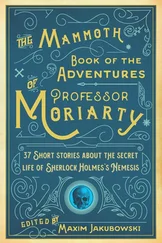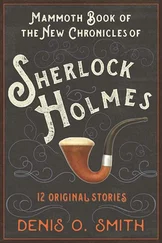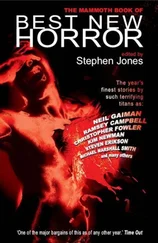In all probability, the 1934 plot was the second attempted coup d’etat against Roosevelt. In the previous year, there had been an assassination attempt against him from which he had escaped unscathed but Chicago Mayor Anton Cermak had died. The assassin, Giuseppe Zangara, was captured and pronounced to be a lone killer. (Shades of Lee Harvey Oswald.) Scuttlebutt on the street, though, was that he was in the pay of the Mafia or a Wall Street cabal.
Certainly in summer 1933, General Smedley Darlington Butler, war hero and former Marine, was approached by bondsman and fascist-sympathizer Gerald C. MacGuire and offered the opportunity of leading a coup against Roosevelt. The veterans’ association, the American Legion, MacGuire boasted to Butler, was to be transformed into a 500,000-strong army. MacGuire also promised a $3 million war, courtesy of DuPont, General Motors and Morgan Bank. Arms and ammunition were to be supplied by DuPont’s subsidiary, Remington.
Fortunately for American democracy, MacGuire and his fellow conspirators chose the wrong man. And how. Butler, the “fighting Quaker”, was an instinctive anti-authoritarian, a man of integrity and a railer against capitalist greed. As a loyal soldier, he complained that he had:
helped make Mexico, especially Tampico, safe for American oil interests in 1914. I helped make Haiti and Cuba a decent place for the National City Bank boys to collect revenues in. I helped in the raping of half a dozen Central American republics for the benefits of Wall Street. The record of racketeering is long. I helped purify Nicaragua for the international banking house of Brown Brothers in 1909–1912. I brought light to the Dominican Republic for American sugar interests in 1916. In China I helped to see to it that Standard Oil went its way unmolested.
Butler played along with MacGuire with the aim of drawing his “friends” out of the woodwork and into the light.
The friends turned out to be a list of American great and bad, and included:
•
John W. Davis, senior attorney for J. P. Morgan
•
Robert Sterling Clark, Wall Street stockbroker
•
Grayson Murphy, director of Morgan Bank, Bethlehem Steel and Goodyear. He also ran the brokerage firm where MacGuire worked
•
Al Smith, former governor of New York, and the co-director of the newly founded American Liberty League.
According to MacGuire the American Liberty League was the crucible of the coup. Grayson Murphy was its treasurer, DuPont executive John J. Raskob was its other co-director, and its founder was the industrialist Irénée DuPont.
DuPont was an out-and-out fascist. What is extraordinary is the number of big beasts from FDR’s own Democratic Party who were in on the plot, such was their hatred for him and his radical “New Deal” policies. Davis was a former Democratic presidential candidate, and Raskob a former chairman of the party.
As soon as Butler had the names of the plotters, he reported to the White House. Roosevelt’s initial instinct was to arrest the conspirators, but the American economy was in the doldrums. He had to assume that a mass imprisoning of Wall Street financiers might trigger another stock market crash. So, Roosevelt defused the plot by leaking the story to the press, taking the gamble that a public outing would make the cabal back off. He also tipped off the House of Representatives’ McCormack–Dickstein Committee (the forerunner of the House Un-American Activities Committee) to launch an investigation. The plotters were asked to appear and, to no great surprise, denied any knowledge of an intended coup to replace the president. The McCormack–Dickstein Committee took four years to release its report on the coup d’etat, and marked it for “restricted circulation”. Publicly, the committee claimed “no evidence” other than “hearsay” linked MacGuire, Clark, Davis, DuPont et all to the putsch. This was a direct contradiction of its internal summation to the House, which concluded: “these attempts [at a fascist coup] were discussed, were planned, and might have been placed in execution when and if the financial backers deemed it expedient…” (See Document, p.587.)
The committee also suppressed parts of General Butler’s (and others’) testimony in its published report (see Document.)
Why did the committee say one thing in public and another in private? Why were none of the conspirators hauled before a court? Almost certainly, because Roosevelt, having headed off the coup at the pass, wanted to save the Democratic Party from embarrassment.
The putschists, meanwhile, went back to captaining finance and industry, their only admonishment the embarrassment of having their Nazi sentiments exposed.
Smedley D. Butler was twice awarded the Medal of Honor and once the so-called “Brevet medal”. But the bravest thing he ever did was putting down the White House putsch.

Further Reading
Jules Archer, The Plot to Seize the White House , 1973
John L. Spivak, A Man in His Time , 1967
DOCUMENT: REPORT OF THE MCCORMACK-DICKSTEIN COMMITTEE INVESTIGATION OF NAZI AND OTHER PROPAGANDA, FEBRUARY 15, 1935 [EXTRACTS] AND THE TESTIMONY OF GENERAL SMEDLEY D. BUTLER BEFORE THE COMMITTEE.
There have been isolated cases of activity by organizations which seemed to be guided by fascist principle, which the committee investigated and found that they had made no progress…
In the last few weeks of the committee’s official life it received evidence showing that certain persons had made an attempt to establish a fascist organization in this country. No evidence was presented and this committee had none to show a connection between this effort and any fascist activity of any European country.
There is no question that these attempts were discussed, were planned, and might have been placed in execution when and if the financial backers deemed it expedient.
This committee received evidence from Maj. Gen. Smedley D. Butler (retired), twice decorated by the Congress of the United States. He testified before the committee as to conversations with one Gerald C. MacGuire in which the latter is alleged to have suggested the formation of a fascist army under the leadership of General Butler (p. 8–114 D.C. 6 II).
MacGuire denied these allegations under oath, but your committee was able to verify all the pertinent statements made by General Butler, with the exception of the direct statement suggesting the creation of the organization. This, however, was corroborated in the correspondence of MacGuire with his principal, Robert Sterling Clark, of New York City, while MacGuire was abroad studying the various forms of veterans’ organizations of Fascist character (p. III D.C. 6 II).
The following is an excerpt from one of MacGuire’s letters:
I had a very interesting talk last evening with a man who is quite well up on affairs here and he seems to be of the opinion that the Croix de Feu will be very patriotic during this crisis and will take the cuts or be the moving spirit in the veterans to accept the cuts. Therefore they will, in all probability, be in opposition to the Socialists and functionaries. The general spirit among the functionaries seems to be that the correct way to regain recovery is to spend more money and increase wages, rather than to put more people out of work and cut salaries.
The Croix de Feu is getting a great number of new recruits, and I recently attended a meeting of this organization and was quite impressed with the type of men belonging. These fellows are interested only in the salvation of France, and I feel sure that the country could not be in better hands because they are not politicians, they are a cross-section of the best people of the country from all walks of life, people who gave their “all” between 1914 and 1918 that France might be saved, and I feel sure that if a crucial test ever comes to the Republic that these men will be the bulwark upon which France will be served.
Читать дальше












